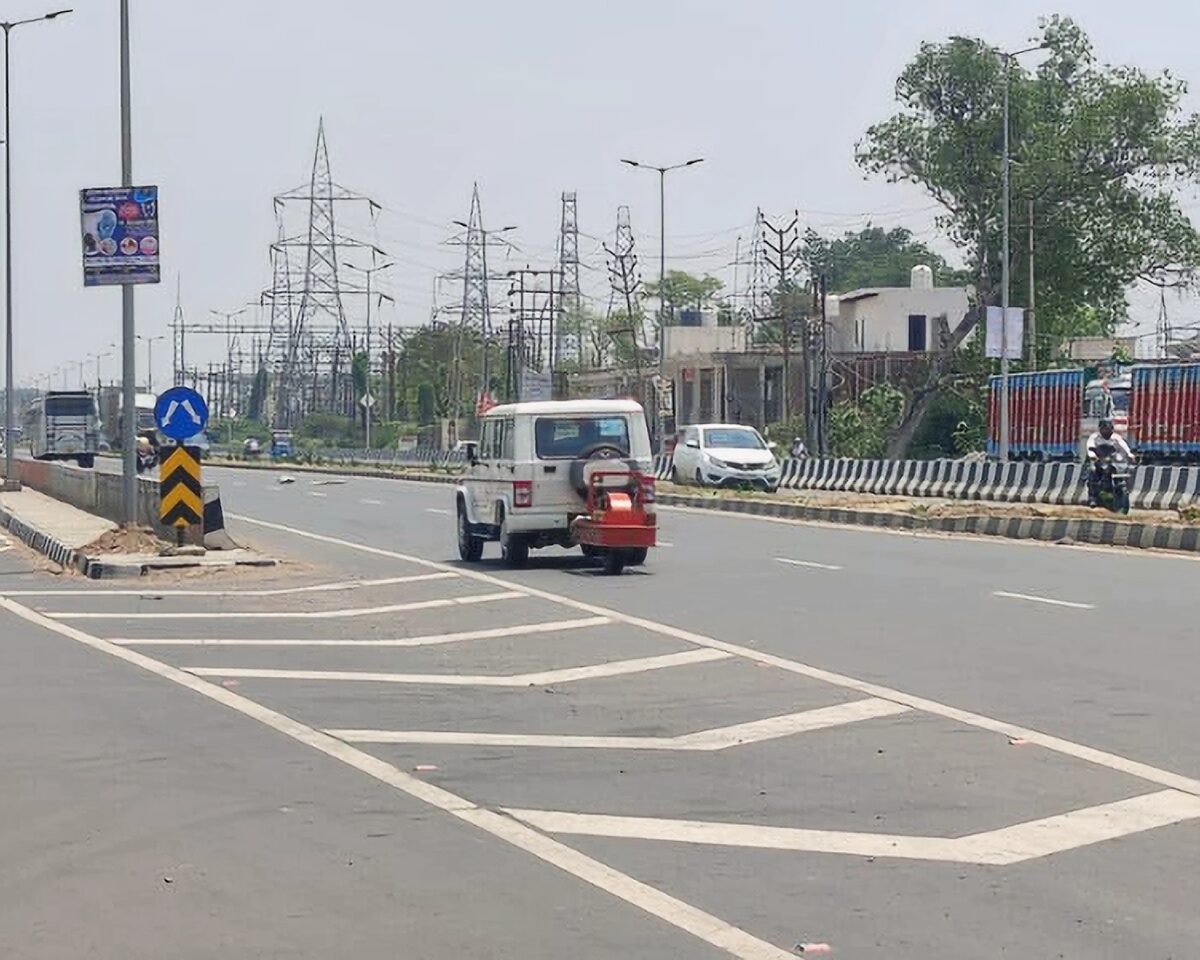There are so many mails received by viewer’s or visitor of my site to provide a clear idea how to face interview for a highway engineer.
First of all , keep in mind employers wish to hire people that are confident in their interviews.But how do they judge this? and what are the simplest ways to point out confidence in an interview so you’ll get hired faster?
Here are the some best questions and answers which is usually asked during interview from highway engineer in any good organization.Hope it will be fruitful to you .
Q 1. Tell me about yourself?
Ans: “Hello, my name is XYZ. I am a professional with a degree/diploma in Civil Engg in 20xx. My qualifications include xyz years of experience in infrastructure project especially in Highway Project & deals with execution aspect.I started my carrier with building project with XXX (Name of First company ) as a Diploma I Degree Trainee Engineer and after that gone to YYY {Name of second company) Site Engineer; after 2017 I engaged in highway project and joined in ZZZ (Name of third company) as Highway Engineer & successfully completed xyz National /State highway project.
At present, I am responsible for raising RFI, making bed of Soil/GSB/WMM , maintain strip chart according to progress,planning for the next day prorgramme and follow the instruction my seniors & do the whatever job assigned to me.
Q 2.What types of pavement is there?
Ans: Flexible /Rigid pavement.
Q 3.What is the crust thickness of pavement in your project?
Ans:650 mm(GSB 250 mm,CTB 200 mm,WMM (Crack Relief Layer)100 mm, DBM 50 mm & BC 50mm). For service road 330 mm- CTGSB 180 mm , WMM 100 mm (Crack relief layer )& BC 50 mm.
Q 4. How much quantity of Earth work, GSB, WMM & Bituminous work is there?
Ans: Earth Work -3000000 m³, GSB 200000 m³, CTB 170000³ ,WMM 100000 m³ & DBM/BC 140000m³ or whatsoever in your project.
Q 5.What is difference between Flexible Pavement & Rigid pavement?
FLEXIBLE PAVEMENT
- Deformation in the sub grade is transferred to upper layers.Have low flexural strength.
- Have low completion test but high repairing cost.
- Damaged by oil and chemicals.
- Design Based on load distribution factor
RIGID PAVEMENT
- Deformation in the sub grade
- is transferred to subsequence Layers.
- Have high flexural Strength.Have low repairing cost but high completion cost.
- No damage by oil or Greece.Design based on Flexural strength or slab action
Q 6 .How much staff is working under you , draw the organization chart & show your position ?
Ans: 4 staffs are working under me and draw the Organization chart on your own , show your position.
Q 7.Who is your consultant/IE ?
Ans : The name of my consultant/IE is xyz.
Q 8 .what is the name of Your IE Team Leader ?
Ans: The name of my consultant/IE Team Leader is Mr/Sri xyz.
Q 9.What is difference between OGL & NGL?
Ans:The first level taken of the natural ground without using any mechanical means is called NGL whereas the level taken after preparation of bed by using mechanical means Grader ,Doze, JCB & Roller is called OGL.
Q 10.What do you know about this company?
Ans:As being an experienced candidate in this sector I’ve heard a lot about your organization.Your organization’s fame and prestige is what drove me here to apply for the position when your job vacancy was posted on your site. I know that your company has been in business for over xyz years, with an excellent reputation in successful completion of highway project .Your company is providing good opportunities to new coming member owing to that I am sitting infront of you.
Q 11.Why dowel bar is being provided PQC pavement?
Ans: Dowel bars are required at expansion joints to transfer wheel loads to the adjacent slab. It is provided in the wheel paths only, it links the two adjacent structures by transferring loads across the joints.
Q 12.What is land width of shoulder in plain & rolling terrain?
Ans : Land width of shoulder will be either 2.0 m or 3.5 m depending upon the situation.
Q 13.What do you understand by Sub-base & base course in flexible pavement ?
Ans : Sub – base course is the first layer which is constructed immediately after the subgrade after the subgrade such as GSB & WBM etc.Base course is sandwich layer between wearing course and sub-base course.Base can have multiple layer such as CTB & WMM etc.
Q 14.What is the vertical clearance of LVUP VUP & CUP?
Ans : The vertical clearance of VUP,LVUP and CUP are 5.5 m,3.5m and 3.0 m simultaneously.
Q 15. What is the Minimum Right of way should be available (ROW) for 4 laning & 6 laning project?
Ans: A minimum Right of Way (ROW) of 60 m should be available for development of a 4 laning and 6 laning project as per IRC SP 84-2014 and IRC SP 87-2013.
Q 16. What is the role of tie bar?
Ans :Tie bar is placed across longitudinal joints at the mid-depth of the slab .It prevent lanes from separation and differential deflections & transverse cracking These are installed by providing appropriate chair or these are installed by providing appropriate (drilled) holes in the side forms depending on the size and spacing of bars. Generally 16 mm dia bar is being used.
Q 17.What is the role of joint sealant?
Ans : It seals the joint width and prevents water and dirt from entering the joint which causing dowel bar corrosion and unexpected joint stress resulting from restrained movement.
Q18.What is the minimum relative percentage compaction requirement for embankment and subgrade ?
Ans: For embankment 95% & for subgrade 97 % relative compaction is required.
Q.19. What is the role of PVC dowel sheet ?
Ans :It serves to facilitate the movement of dowel bar.On one side of the joints,the dowel bar is encased in concrete.On the other side, however, the PVC dowel sleeve is bonded directly to concrete so that movement of dowel bar can take place.
Q 20 Tell the level tolerance in Subgrade (For flexible Pavement) ?
Ans; Sub grade +/- 20 mm.
Q 21.What is bumping or pumping in subgrade & why occur?
Ans: A bumping/pumping in subgrade is similar to the concept to trying to compact something on matress means when soil compactor rolls over a prepared subgrade soil . it got compacted with staggered line but when roller cross over, soil returns to its original position . This type of phenomena occurs when excess moisture is present in the prepared bed.
Q 22.What do you understand by carriage way?
Ans: It is the width of the road which is used by the traffic for moving on it.It is generally central portion of the total land width and is paved and surfaced with the bituminous concrete for service to the road users.
Q 23 .What is hard shoulder?
Ans:The hard shoulder is the area at the side of a motorway or other road where we are allowed to stop if our car breaks down.It is generally separated by white line.
Q 24. Why the saw cut joint is provided in road kerb?
Ans: Saw cut helps control cracking occurs due to shrinkage in Kerb.
Q 25. What is the role of separation member in Rigid Pavement?
Ans: The separation membrane between concrete pavement slab and sub-base has mainly 4 function:
- It avoids the possibility of active aggressive agents from soil water being attached to the concrete slab.
- It prevents the loss of cement and water in immature concrete which significantly affects the strength and durability of hardened concrete.
- It reduces friction between concrete and sub-base.
- It avoids the mixing up of sub-base materials and freshly placed concrete.
Q 26. What is the median width in raised condition in plain & Mountainous and Steep terrain?
Ans: In plain area generally 5.0 m but in built up area 2.5 m.In mountainous & steep terrain it is always 2.5 m.
Q 27. What is minimum bitumen content in DBM & BC for grade 1?
Ans ; DBM 4.0 % & 5.2%
Q 28.Tell me the difference between Slope and Camber?
Ans : Slope is an area of ground that tends evenly upward or downward while camber is a slight convexity, or curvature of a surface of the road , so that water will flow off the sides .Camber is the transverse slope provided to the road surface for the drainage of the rainwater for the better performance of the road. Camber can be written as 1 in n or x%.
Q 29. What is the reason for rutting?
Ans: There are 5 main reason for rutting
- Heavy traffic axle.
- High temperature & using VG30 bitumen.
- Higher bitumen content.
- More fines.
- Less air voids in bituminous surface.
Q 30. For how many period flexible pavement design should be done?
Ans; Flexible pavement shall be designed for a minimum design period of 15 years or operation period, whichever is more.
Q 31. For how many period rigid pavement design should be done?
Ans; Rigid pavement shall be designed for a minimum design period of 30 years or operation period, whichever is more.
Q 32. ln tack coat & Prime coat which type of emulsion is used as per MORT&H 5th revision?
Ans; In tack coat RS1 & in prime coat SS1
Q33.How much minimum longitudinal slope is required for lined drains and unlined drains ?
Ans: As far as possible, longitudinal slope shall not be less than 0.3 percent for lined drains and 1.0 percent for unlined drains.
Q 34. What should roughness Index be of finished wearing course?
Ans: Not more than 2000 mm/km for each lane in a km length.
Q35.What will the minimum thickness of bituminous overlay for pavement strengthening ?
Ans: The thickness of bituminous overlay for pavement strengthening shall not be less than 50 mm bituminous concrete after attending to the requirements of profile corrective course.
Q 36. What is the advantage of Cement Treated Base ?
Ans: There are so many advantages of using CTB :
- CTB provides a durable, long-lasting base in all types of climates.
- Can speed up the Project Completion
- Can reduced thickness of pavement.
- Reduced Project Cost (approx. 8 to 10 thousand rupees per metre)
- Reduced consumption of aggregate.
- Reduced consumption of bitumen.
Q 37. What will be the cross fall on straight sections of road carriageway, paved shoulders of bituminous surface and paved portion of median for concrete surface in National Highway project?
Ans:The cross fall on straight sections of road carriageway, paved shoulders and paved portion of median will be 2.5% for bituminous surface and 2.0% for the cement concrete surface.
Q 38. What is the justified minimum design speed for service road ?
Ans: A minimum design speed of 40 km/h shall be adopted for service roads.
Q 39. In open country, on what space median openings shall be provided?
Ans: In open country, median openings shall not be spaced closer than 2 km. Additional controlled openings can be provided for inspection and diversion of traffic during repair and rehabilitation.
Q 40. In built area, on what space median openings shall be provided?
Ans; In built up area, median opening shall be provided as per site requirement and the spacing between two medians opening in built up area shall not be less than 500 m.
Q 41.As per IRC what is the minimum dia of new pipe culvert, cushion & class to be used in National Highway?
Ans: As per IRC SP 84-014 minimum dia of new pipe culvert should not be less than 1200 mm & pipe should be NP4 pipe. Minimum depth of earth cushion over pipe excluding road crust shall not be less than 600 mm for new,reconstructed and retained culverts constructed in National Highway projects.
Q 42.What is the output of excavator having 1 m3 bucket?
Ans : 60 m3 /hour
Q 43. Why the mastic is being provided on deck slab ?
Ans: In most cases the protective layer is a Mastic Asphalt layer. This layer also serves as a second waterproofing layer. The non-porous mastic asphalt is usually used for the protective layer of the bridge pavement.
Q 44.What is your weakness?
- The first is my inability to share responsibilities.
- I lose my patience when I suspect that the other person isn’t doing it right. I’ve discussed these weaknesses with my supervisor as areas I’d like to improve.
- The third is I easily trust on anyone.
Q 45. Why you want to leave your present company?
Ans : You can tell any of the following points:
- I would really love to be part of your project from beginning to end, and I know I’d have that opportunity here.
- In my current role, I’ve learned many new skills. I’m looking for a position in which I can continue to grow that skill set in new circumstances.”
- I’ve learned a lot in my current role, but I’m looking for an opportunity that provides more challenges as I continue developing my skills and abilities.”
Q 46.Tell me your 5 strong point?
Ans: Tell the following points with cleverness:
- Flexibility to handle any situation.
- Good Communication.
- Work under pressure.
- Dedication.
- Honesty
Q 47.Tell me your achievement in your carrier?
Ans: Tell any of the below point confidently:
- Re-organized something to make it work better
- Identified a problem and solved it
- Come up with a new idea that improved things
- Developed or implemented new procedures or systems
- Worked on special projects
- Received awards/Certificates
Q 48.What is your salary expectation?
Ans; This is your most important negotiation. Never tell lie about what you currently having, but feel free to include the estimated cost of all your fringes, which could well tack on 25 -30% more to your present “cash-only”salary.
Q 49 .How much time you required to join?
Ans: Always says one month but handle this situation very calmly, if you are ideal & have no job, can say within 7 days.








